Abstract
1. The bicarbonate concentration in cat pancreatic juice falls and the chloride concentration increases at slow secretory rates. The concentration of sodium and potassium remain constant at all secretory rates.
2. Acetazolamide reduces the maximal rate of secretion markedly, and the maximal bicarbonate concentration slightly, but does not alter the reciprocal relationship between bicarbonate and chloride at slow rates of flow.
3. By perfusion of the main duct it has been shown that there is a loss of bicarbonate and a gain of chloride across the duct wall due to a passive process of exchange diffusion. It is suggested that this may account for a substantial part of the flow-dependent changes in bicarbonate and chloride concentrations in the intact gland.
4. The enzyme content of pancreatic juice is made up of a small continuous basal output, to which may be added a much larger secretion in response to hormonal stimulation.
5. From analysis of successive small samples of juice it has been found that the response to single injections of pancreozymin lasts a very short time, during which the secretory cells release enzymes in a small volume of chloride-containing fluid.
6. It is concluded that in the cat pancreatic secretion consists of an isosmolar primary secretion mostly of sodium bicarbonate, to which is added small amounts of a chloride-containing enzyme secretion. This fluid is modified, particularly at slow flow rates, by transductal exchange of chloride and bicarbonate which, at least in the main duct, is passive in nature.
Full text
PDF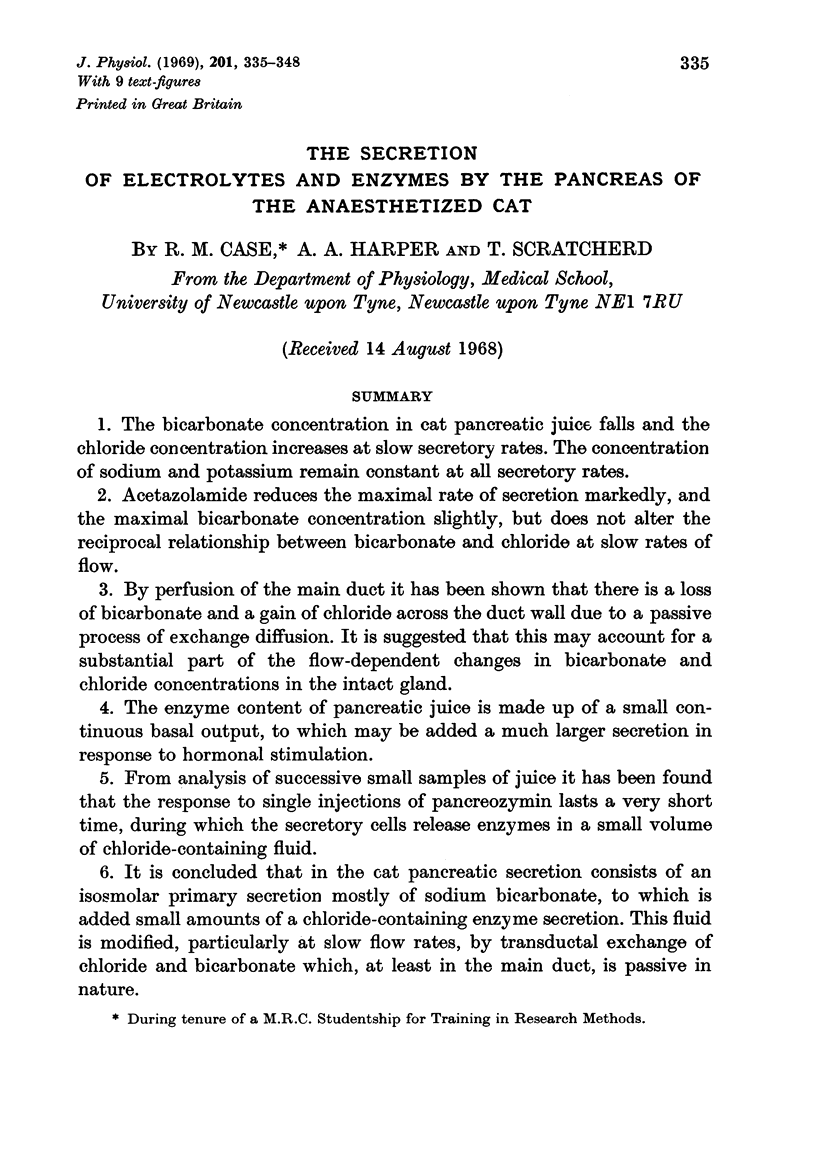
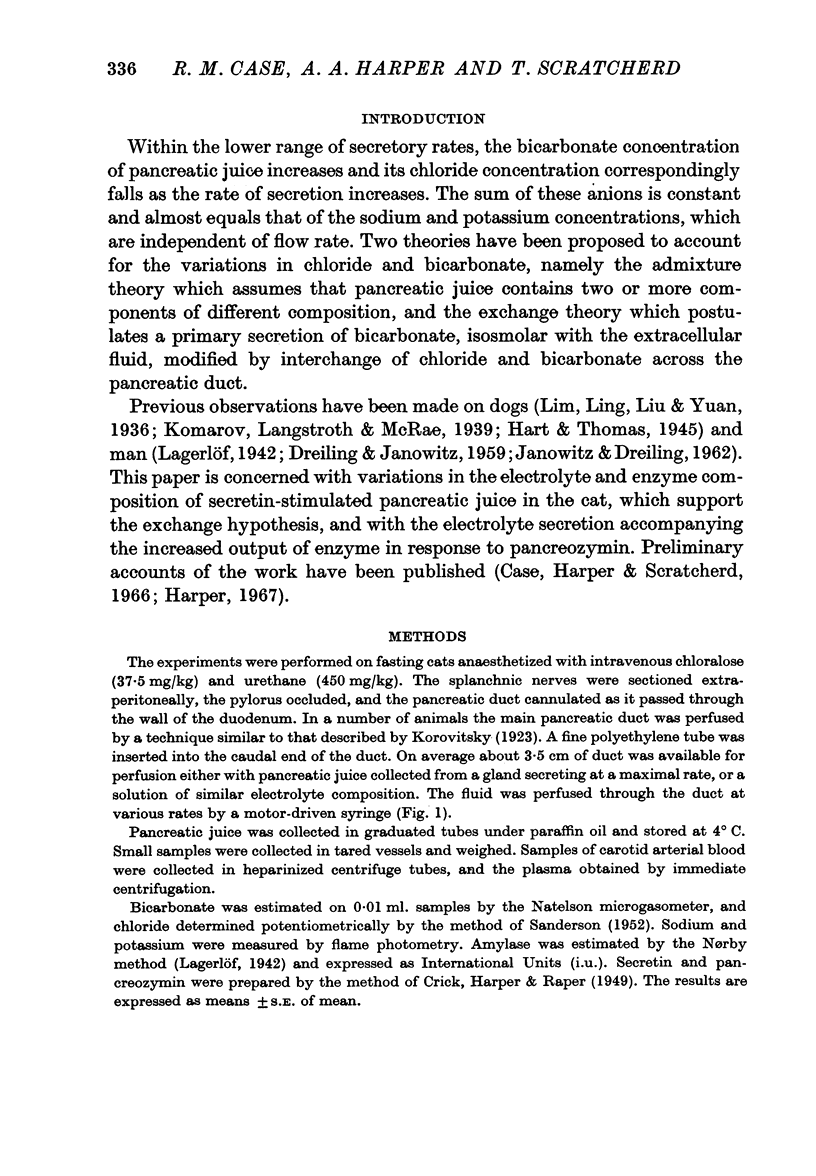
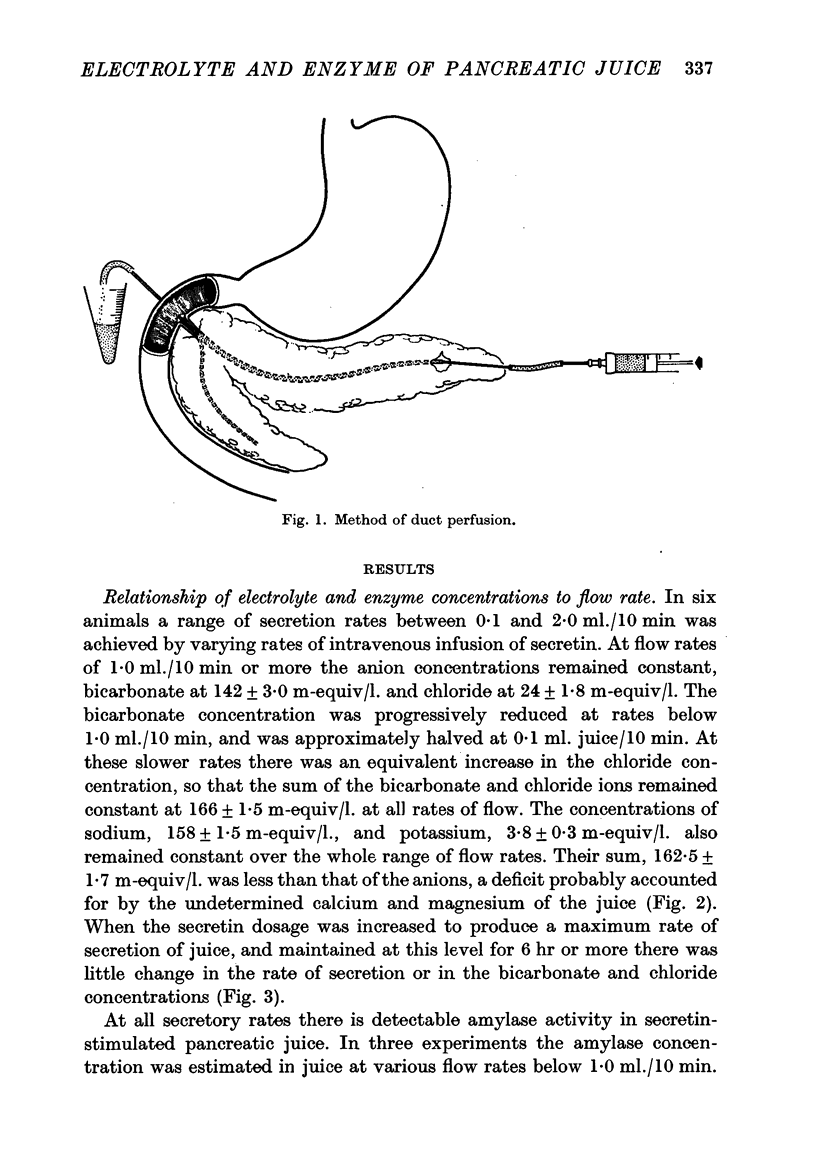

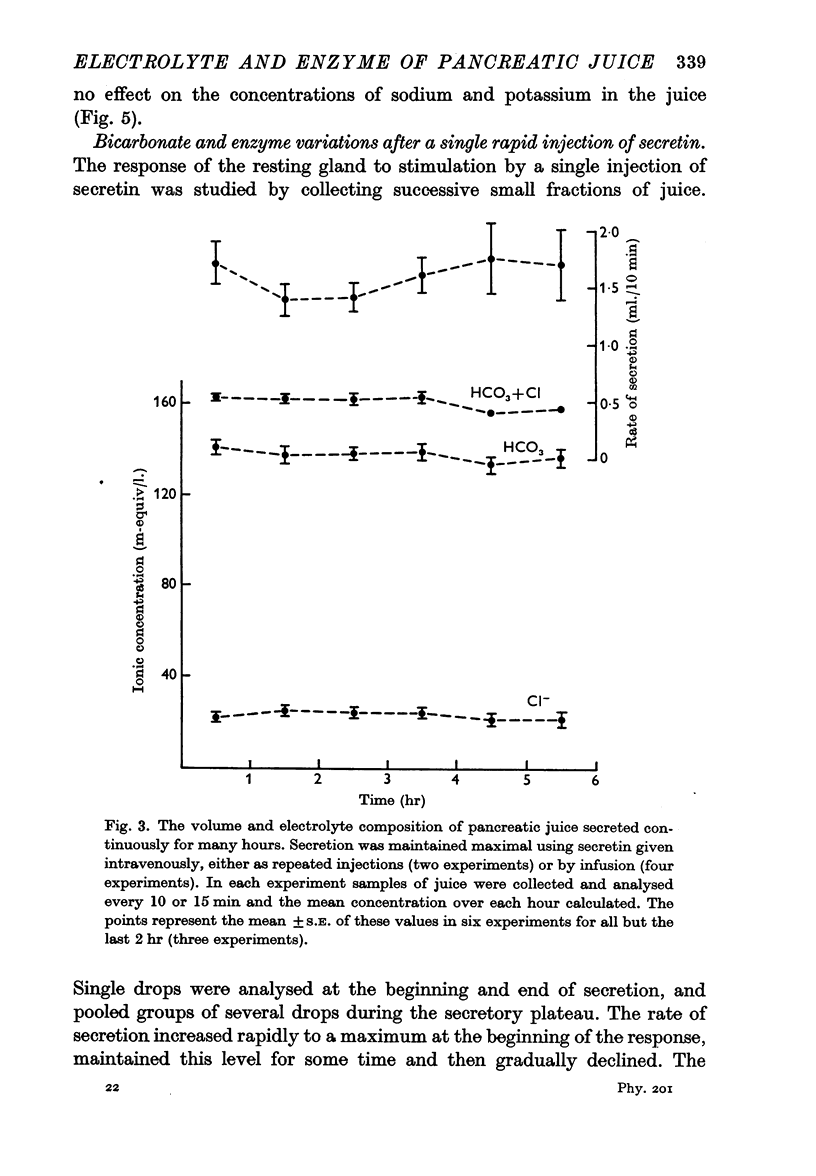
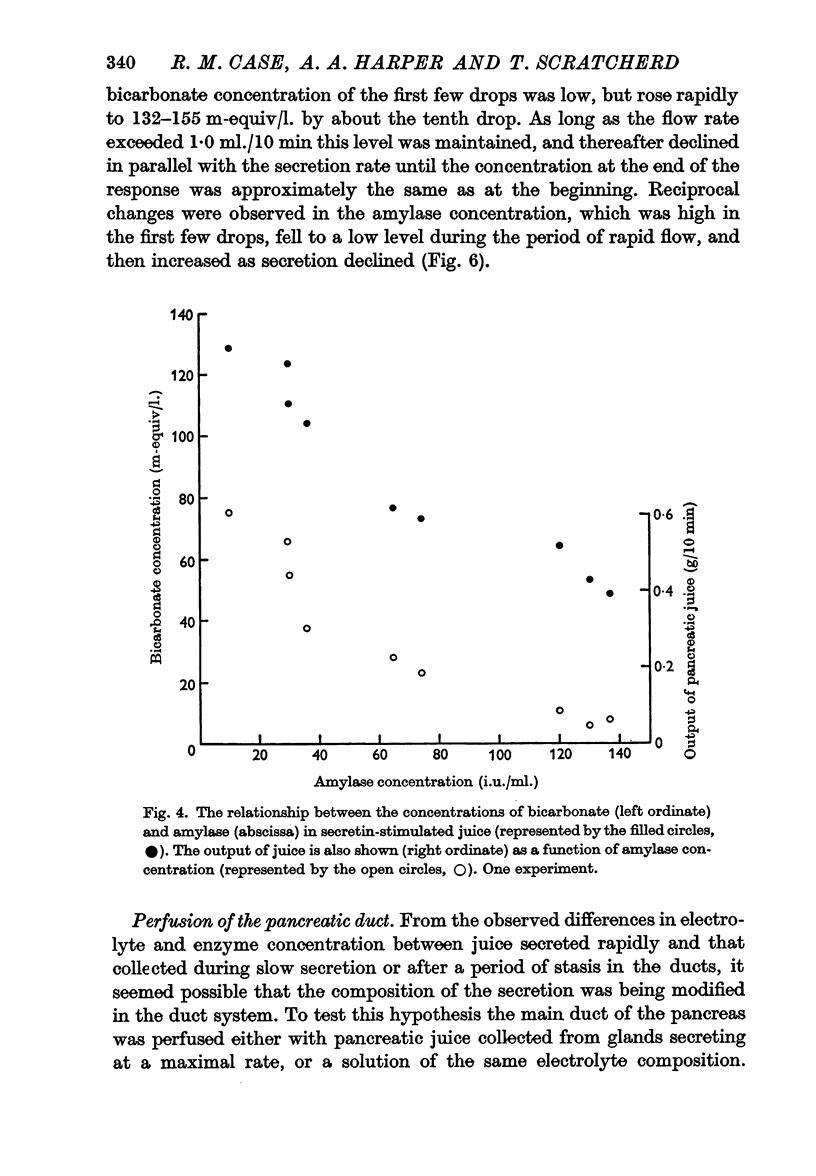
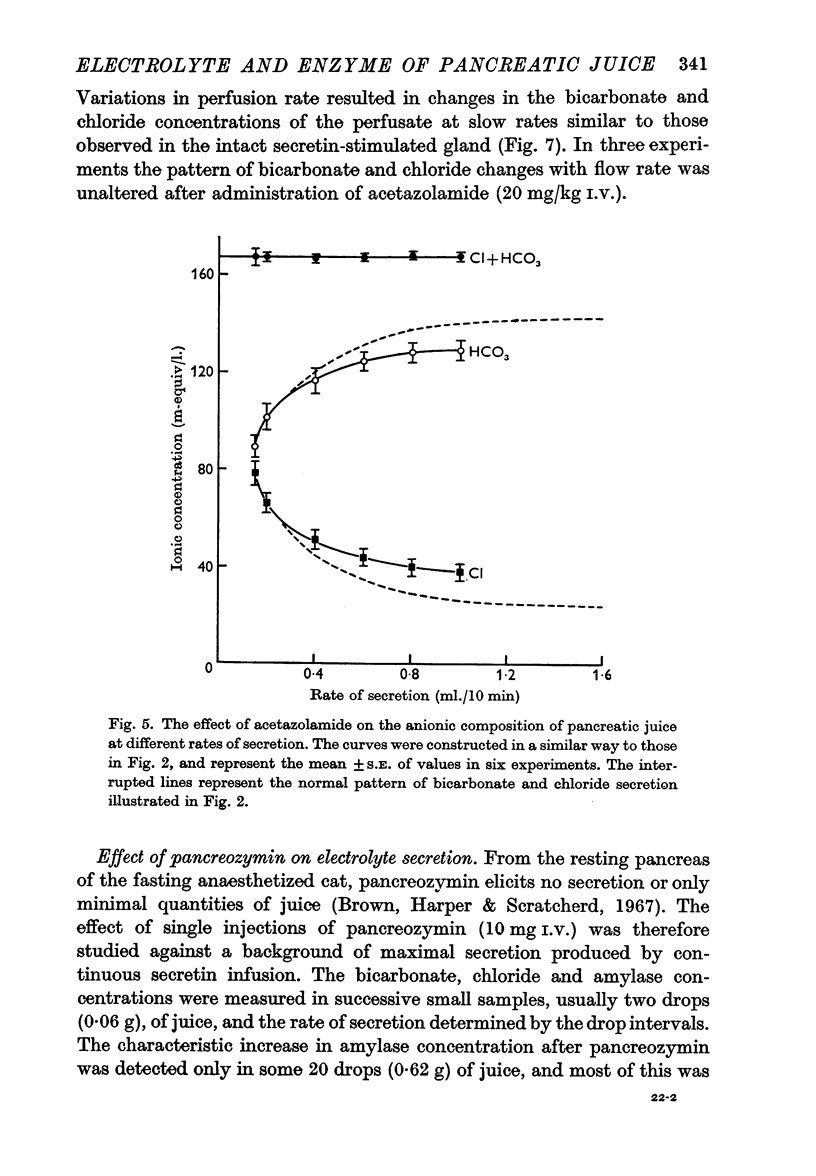

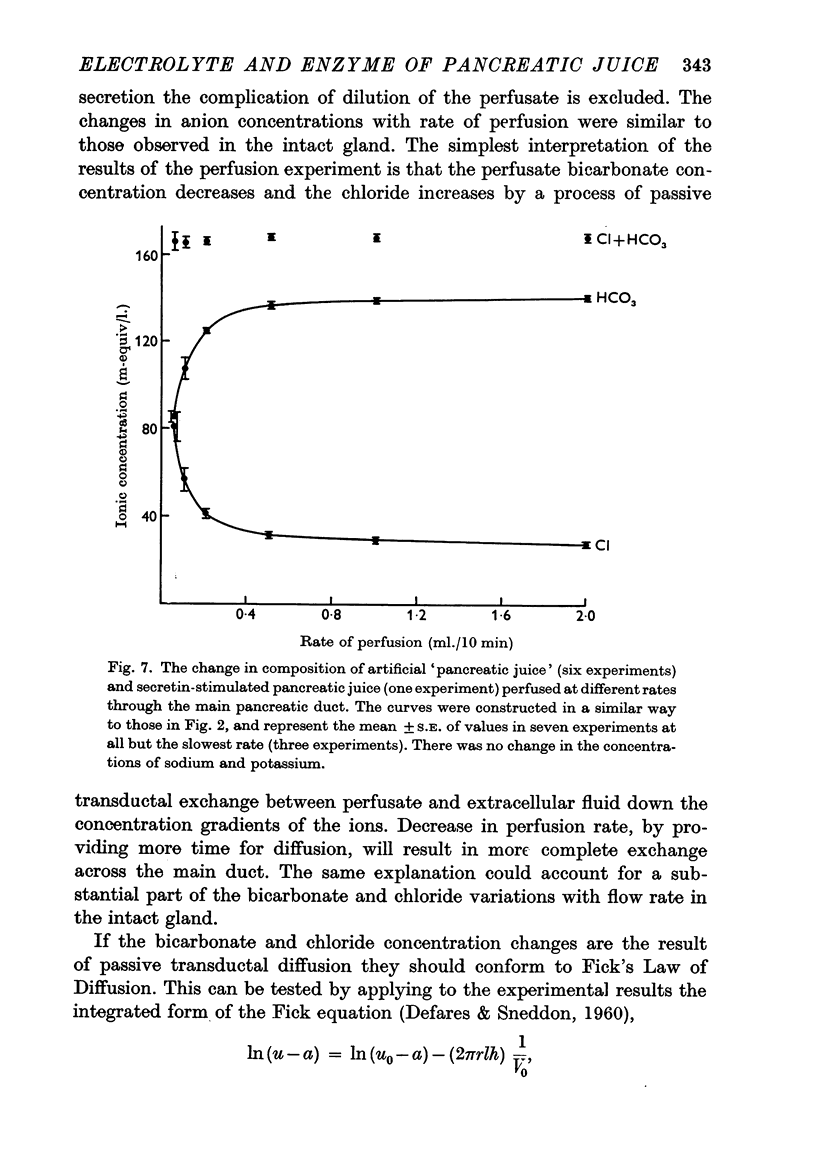
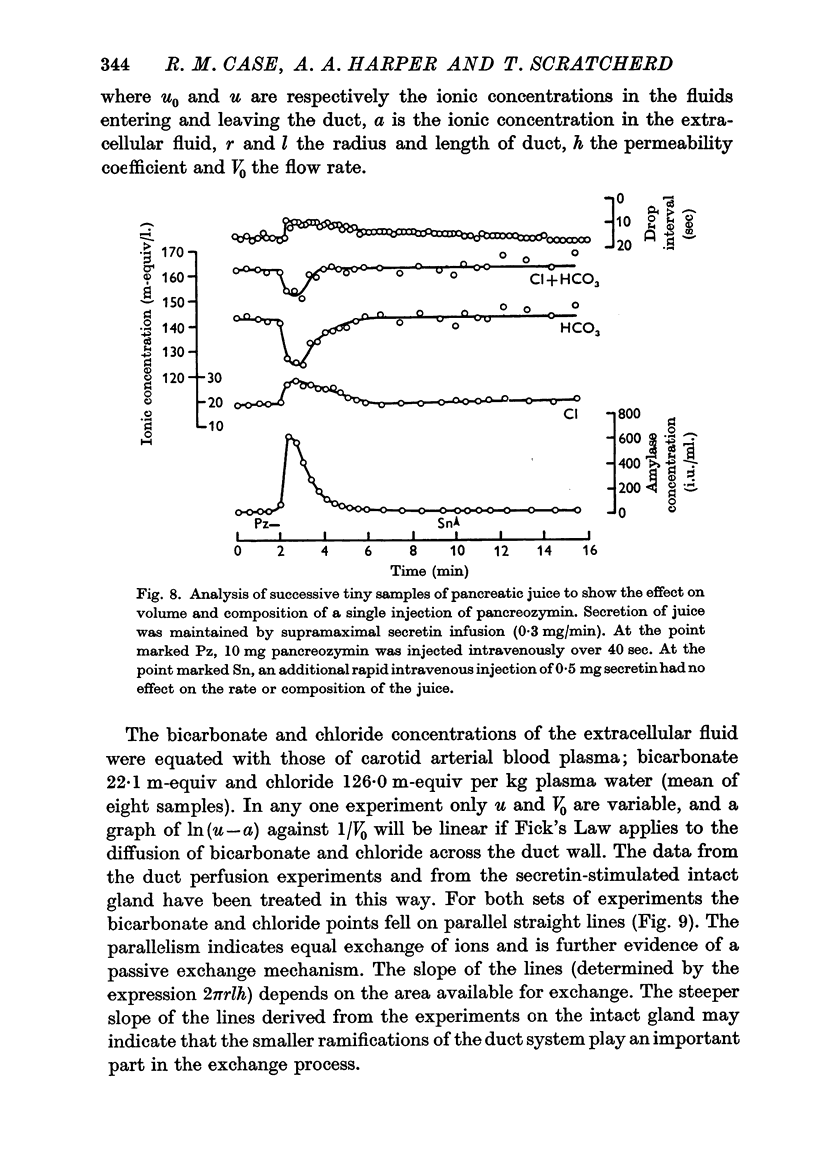


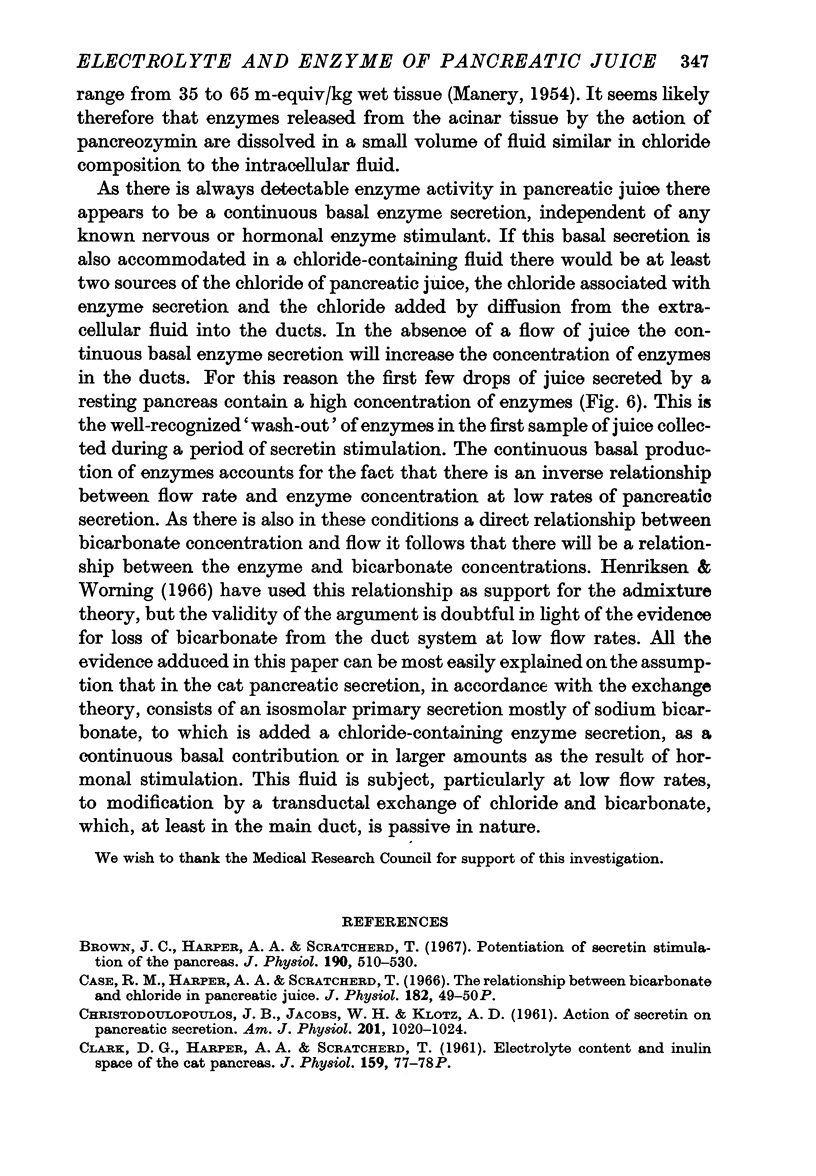
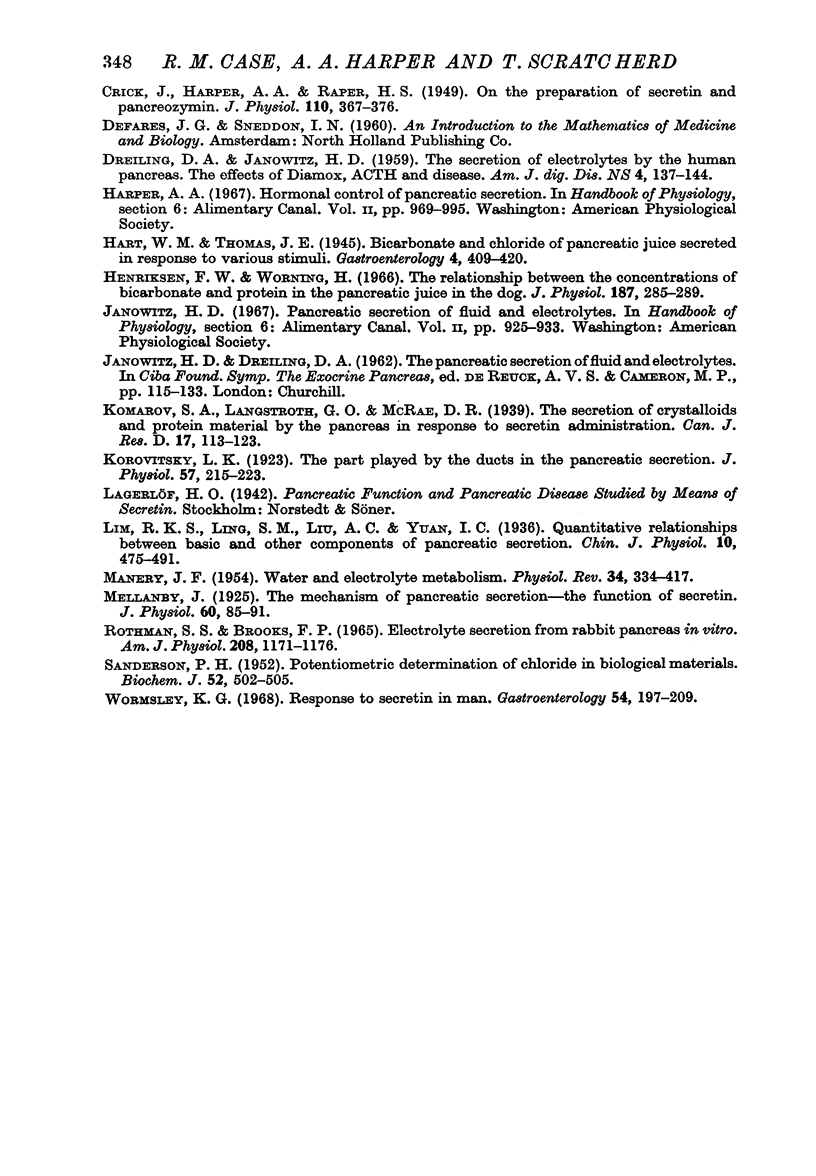
Selected References
These references are in PubMed. This may not be the complete list of references from this article.
- Brown J. C., Harper A. A., Scratcherd T. Potentiation of secretin stimulation of the pancreas. J Physiol. 1967 Jun;190(3):519–530. doi: 10.1113/jphysiol.1967.sp008225. [DOI] [PMC free article] [PubMed] [Google Scholar]
- CHRISTODOULOPOULOS J. B., JACOBS W. H., KLOTZ A. P. Action of secretin on pancreatic secretion. Am J Physiol. 1961 Dec;201:1020–1024. doi: 10.1152/ajplegacy.1961.201.6.1020. [DOI] [PubMed] [Google Scholar]
- CRICK J., HARPER A. A., RAPER H. S. On the preparation of secretin and pancreozymin. J Physiol. 1949 Dec;110(3-4):367–376. doi: 10.1113/jphysiol.1949.sp004445. [DOI] [PMC free article] [PubMed] [Google Scholar]
- DREILING D. A., JANOWITZ H. D. The secretion of electrolytes by the human pancreas; the effect of diamox, ACTH, and disease. Am J Dig Dis. 1959 Feb;4(2):127–144. doi: 10.1007/BF02231234. [DOI] [PubMed] [Google Scholar]
- Henriksen F. W., Worning H. The relation between the concentrations of bicarbonate and protein in the pancreatic juice in the dog. J Physiol. 1966 Nov;187(2):285–289. doi: 10.1113/jphysiol.1966.sp008089. [DOI] [PMC free article] [PubMed] [Google Scholar]
- Korovitsky L. K. The part played by the ducts in the pancreatic secretion. J Physiol. 1923 Mar 21;57(3-4):215–223. doi: 10.1113/jphysiol.1923.sp002060. [DOI] [PMC free article] [PubMed] [Google Scholar]
- MANERY J. F. Water and electrolyte metabolism. Physiol Rev. 1954 Apr;34(2):334–417. doi: 10.1152/physrev.1954.34.2.334. [DOI] [PubMed] [Google Scholar]
- Mellanby J. The mechanism of pancreatic digestion-the function of secretin. J Physiol. 1925 May 21;60(1-2):85–91. doi: 10.1113/jphysiol.1925.sp002223. [DOI] [PMC free article] [PubMed] [Google Scholar]
- ROTHMAN S. S., BROOKS F. P. ELECTROLYTE SECRETION FROM RABBIT PANCREAS IN VITRO. Am J Physiol. 1965 Jun;208:1171–1176. doi: 10.1152/ajplegacy.1965.208.6.1171. [DOI] [PubMed] [Google Scholar]
- SANDERSON P. H. Potentiometric determination of chloride in biological fluids. Biochem J. 1952 Nov;52(3):502–505. doi: 10.1042/bj0520502. [DOI] [PMC free article] [PubMed] [Google Scholar]
- Wormsley K. G. Response to secretin in man. Gastroenterology. 1968 Feb;54(2):197–209. [PubMed] [Google Scholar]


